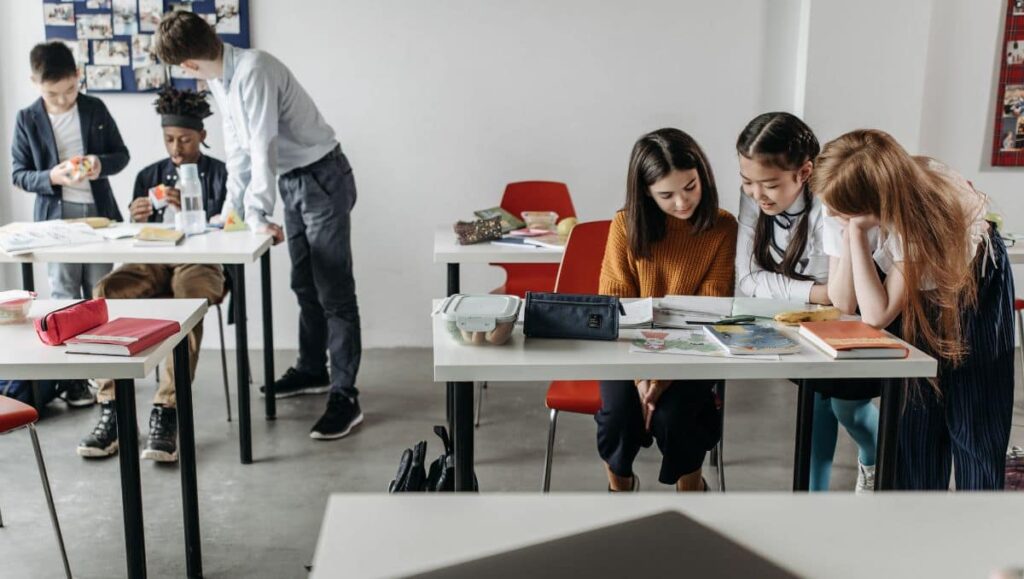Even in the 21st century, a major obstacle to students’ growth is classroom participation, in which discussion isn’t emphasized. However, active discussions in the classroom are extremely crucial for developing life skills, which are essential for many areas of life. It assists teachers in providing feedback about every student, including what they are doing well or what needs to be adjusted to improve their engagement and performance.
The majority of students think that keeping quiet and only listening to class discussions and lectures is the safer option. It’s not the case with introverts only; even cheerful children often show less engagement in class. This blog will feature an informative discussion that will highlight the fears that cause less student engagement, strategies, and the importance of improving classroom engagement.
Boosting Classroom Participation: Key Strategies
Major Reasons for Classroom Participation Struggle
From the fear of looking silly or less smart to a lack of confidence, many reasons contribute to the issue of classroom participation:

1. Fear of Judgement
One of the main learning barriers behind students’ less engagement in classrooms is the fear of being judged. Students feel that their peers or teachers will consider them silly or less smart if they answer incorrectly.
2. Lack of Confidence
Lack of self-esteem is another major reason behind less student engagement in the classroom. Students with low self-confidence think that they can’t succeed in exams or quizzes, which makes them hesitant to learn and participate in classroom discussions.
3. Cultural Reasons
Many cultural norms of the society, including language proficiency, weaker backgrounds, and others might lead to students thinking that their perspective isn’t valuable. Also, students from rural backgrounds might develop a fear of inferiority due to differences in their language and lifestyle.
4. Lack of Preparation
Students who are prepared for the class tend to be more active in classroom discussions. The reason behind the unpreparedness could be the failure to complete homework due to many reasons, including difficulty in understanding concepts, excessive workload due to not scheduled study time, etc.
5. Shyness
Shyness is the most common reason behind less classroom participation. Shy people often feel uneasy and nervous talking in groups or with others. Introversion is often confused with shyness, but both are two separate aspects. Shyness causes students to skip social events, making them sweaty in front of others, and fear negative judgments.
6. Previous Bad/ Embarrassing Experience
One of the most common learning barriers for a student’s reluctance to take part in classroom discussion could be a bad or embarrassing experience of being judged by teachers or peers in the past.
7. Response from Teachers
How teachers respond to a student’s answer greatly impacts student engagement in class. Negative behaviors, including disapproved looks, subtle head nods, and turning away while the student is still answering, etc., are the main reasons for discouraging students from participating in the classroom.
Importance of Classroom Participation

Improving classroom participation not only benefits students but is equally important for teachers.
- Through active participation in classroom discussions, students can deepen their knowledge of a particular topic or subject matter.
- By enhancing their understanding of a topic, students develop the ability to retain what they learn about and identify their interests.
- Communication skills and self-confidence are greatly improved through sharing ideas and asking doubts in the classroom.
- Negative emotions like isolation, stress, hopelessness, etc. are reduced in students by improved classroom participation. This assists in making students feel more happy and socially satisfied.
- It has been proven that active classroom discussion assists in better performance of students in exams, as it enhances students’ critical thinking, problem-solving, and other skills.
Benefits of Classroom Participation for Teachers

- Teachers get valuable insights into how well students understand concepts, which assists them in adjusting their teaching strategies to satisfy the needs of students.
- Active engagement of students in the classroom greatly helps to build a strong bond between students and teachers, which is essential for students’ future achievement.
- Creating an enjoyable learning environment can increase the job satisfaction of teachers, which can give them a sense of accomplishment.
Teaching Strategies to Foster Active Classroom Engagement

Multiple teaching strategies can contribute to the creation of a more active, inclusive, and collaborative environment in the class, which include:
- Active Learning: Encourage active learning by creating opportunities for students’ participation. Planning activities like group discussions, debates, role-playing, and asking questions throughout the class can help with this. This will also assist you in providing students with more meaningful feedback.
- Integrate Project-Based Learning: PBL can be significantly beneficial in improving classroom participation by providing students with experiential and hands-on learning opportunities.
- Peer Teaching: Pair students as reading buddies or for other collaborative activities. This could be the best way to satisfy the goal of classroom dynamics, as it results in better academic performance and emotional intelligence. Also, it can be especially helpful for students with low interpersonal skills and lower self-esteem.
- Foster a Positive Environment: Don’t make assumptions about students’ abilities based on their behavior, as it’s not only necessary that introverted students are weaker or less intelligent. You can assist shy students to be open about their ideas initially by giving them the option to write their thoughts or ideas. Also, make efforts to get to know each student individually and try to be more engaged with weaker or shy students. You can initially start with smiling and making contact with shy students.
Conclusion
From improving the learning experience to the development of lifelong skills in students, there are many ways in which active classroom participation can be helpful. The effective strategies discussed above will gradually result in increasing the participation of students in classroom discussions.
Sanjay Ghodawat International School, Pune, understands the importance of strong classroom dynamics for students’ brighter future. Our well-rounded curriculum and knowledgeable faculty ensure providing a positive learning space for students. With a track record of academic excellence for over 14 years, we can guarantee a promising future for your child.
Also read – Teaching Sustainability and Green Practices in Schools








Leave a Reply